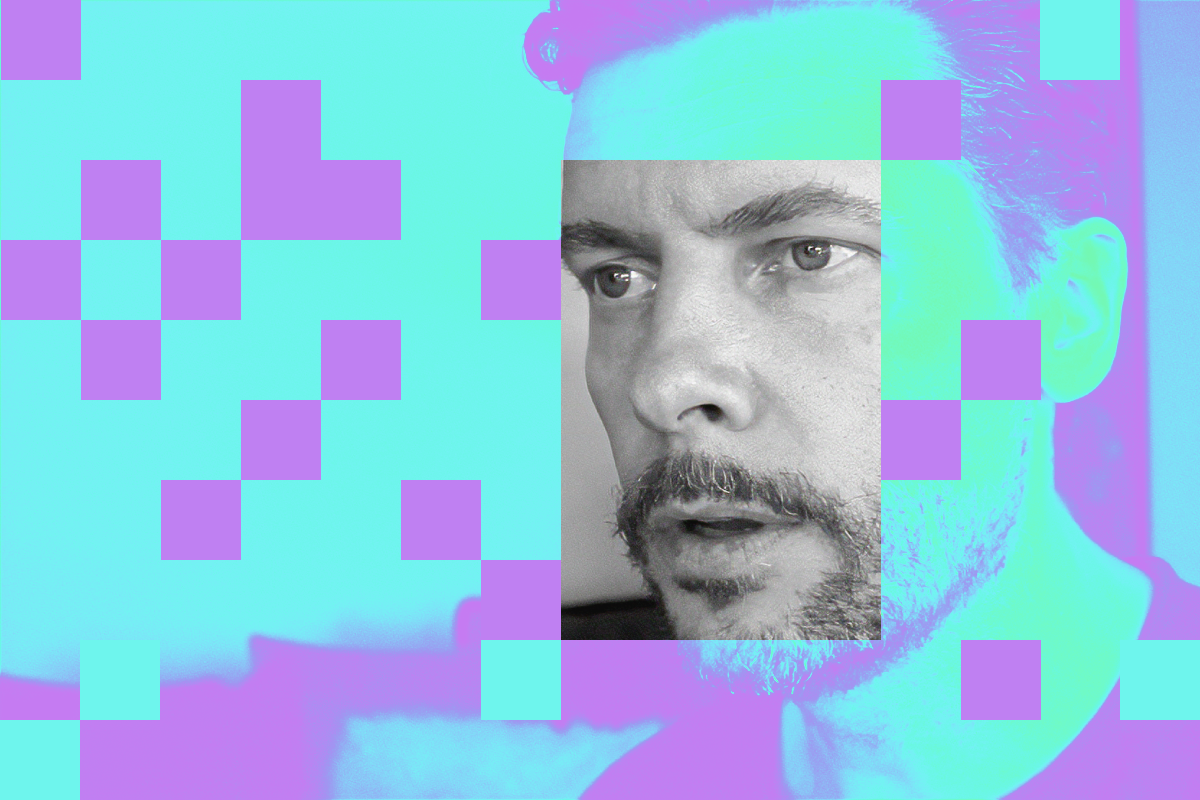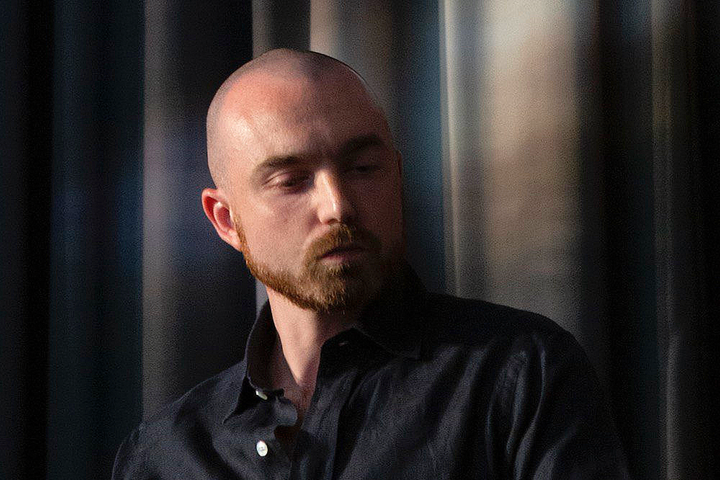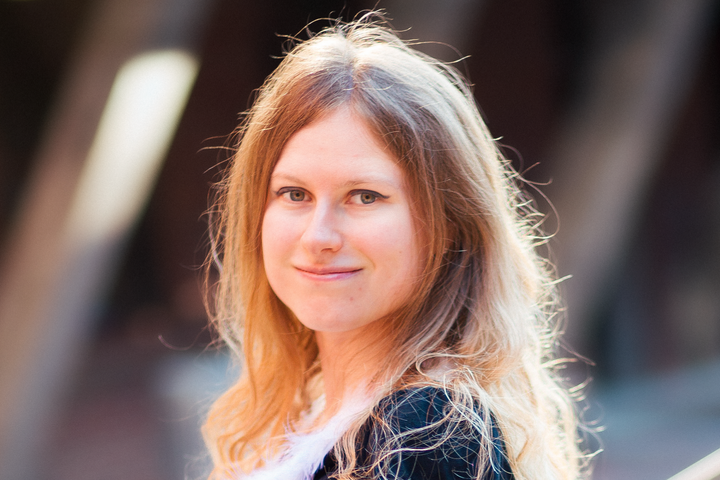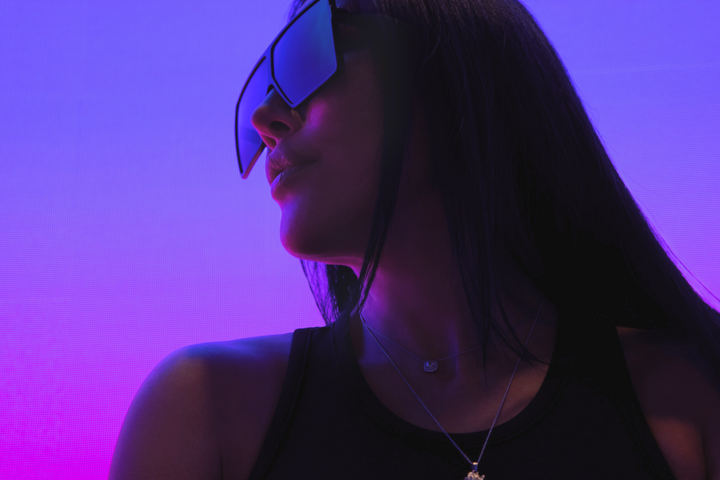Michael Kutsche on OG artists, Future of Web3 space and new concepts

With an idiosyncratic approach of pairing seemingly contradictory visual elements of centuries-spanning artistic movements as well as mythical creatures, historical figures and pop culture elements, Michael Kutsche creates evocative paintings and animations that feel at once like fragments of anachronistic fairytales but also raise questions about the human condition and nostalgia, and ultimately force us to view past and present from a new angle.
Hi Michael. Thanks for taking the time to talk.
You’re welcome, pleased to meet you. I think you coined the term cybernetic existentialism, right? I’ve been trying to come up with a term for this and I really like it.
Thanks, but I actually saw it used by an artist in one of the selections on The Curated app, so I borrowed it. I don’t know if he actually coined it, but I thought it was useful.
I guess it’s hard to trace the origin now, like with many things. He probably heard it from someone else. Even art is like that. I feel that part of the artistic practice is this kind of iterating on what has been created before. A bit like passing the torch from generation to generation, adding a bit of ourselves with each iteration. But the further you want to go back in time, the harder it is to trace the origin.
Have you heard about the steam engine effect? I came across it when I was researching, cyberfeminism. The term cyberfeminism is kind of proof of the steam engine effect, because it came up in two completely different continents. Someone was using it in the UK and someone was using it in Australia, absolutely independently. If there is a moment where the steam engine should be born, it will be born anyway, it will be invented and it doesn't matter on which continent. I guess the preconditions are right.
My wife would say that it’s the universe, everything is connected, and when someone has a thought there might be someone else who has that same thought in that moment. With the work, sometimes (and I heard this from a lot of other artists) we cannot really construct an idea, or we can, but the idea is not so powerful, then we sit down and say we want to explain this correlation and then we create a concept around it and hey, this is the idea. The more interesting ideas that we see, for example from filmmaker David Lynch, require a meditative process and it's almost like catching the big fish because you make a deep dive into yourself. It’s somewhere in this treasure chest, deep down below and you're an archeologist excavating it. Now you have the idea, but it's not really like you invented it.
The Web3 space is highly populated by so-called creators, who are different from what I call artists (I come from the traditional art world). But it's very open. Now it’s becoming a bit more curated, which is not a bad thing. How do you feel about that environment?
There was a bit of a bubble. OG artists like XCOPY or Kevin Abosch were making crypto art way before it was popular and before people could make money with it. And all of a sudden there’s the historic Beeple $69 million sale. So, everyone who was a digital artist at the time and probably hadn’t looked at NFTs was now wide awake. In my life there have been several trajectories. I was always interested in painting with oils, but I also did 3D animation and character design, so I kind of went in a more commercial direction. Then, all of a sudden there was this opportunity. Being able to find collectors, without the the need to have a large painting studio, and to find a gallery, let alone the logistics of shipping the work. Being a commercial artist who has worked in film is kind of a red flag for a lot of galleries in the traditional art world. They want you to have dedicated your whole life to making art and not doing commercial work. That notion didn’t seem to exist in the NFT space.
I use a lot of references from art history. I'm very interested in Hieronymous Bosch, Neo Rauch or Adrian Ghenie. Now there are other artists like me who add this type of context and work more conceptually, so it's matured a little bit, but I think the initial run on NFTs scared off traditional artists, because they might have thought it would put their work in a bad context. Although there were some who got involved, like Urs Fischer and Takashi Murakami.
I think curators are so important. I'm even posting on Twitter about this and naming the curators, like Lady Cactoid, who has curated at LACMA, Nina Roehrs, who’s a German curator at the forefront of digital art and NFTs. I was lucky that my Sotheby’s release went to a collector who was a contemporary art collector before. The beauty of Web3 is that we could connect beforehand. It's great to be represented by Sotheby's, but the connection with the collectors usually happens apart from it, on Twitter. It creates a very interesting personal connection, that is often not the case when a gallery is between the artist and the collector.
So, how do you think the field will evolve?
Everyone will have access to the same tools. People who are traditionally-trained painters can use AI as something to bounce ideas and I think they’ll be at a great advantage if they do that. The thing is, it’s a tool. There’s no need to panic. I guess artists also panicked when photography was invented. Of course, some kinds of jobs will disappear or be less well paid. You don’t need as many artists in an art department for a film for example. But if you look at the successful AI artists, there's always a person with artistic vision, the AI is not doing that on auto-pilot. It is more of a collaboration. One of the main issues is that the market is so volatile. Even if you're an established artist, there can be a period of a couple of months where there is a bear market and no one’s buying art. So this is when you just need to be in your studio working, then try to make sales when the market picks up again. There’s also a technical issue. I was recently in an exhibition at CAFA Art Museum in Beijing. To display the work I wanted to use LED displays from StandardVision, which is kind of the museum standard for digital art display. But they are so pricey that ultimately Samsung screens were used. The 16:9 aspect ratio is too narrow when you tilt it. Basically, we had a TV screen and the artwork in the center but there were black bars at the top and bottom. Now, I'm in touch with a guy here in Los Angeles who's building custom LED displays. It’s an investment on my part, but this is what you have to do if you’re not Refik Anadol or Jeffrey Deitch!
As far as your work is concerned, can you tell us how it’s developing? Do you have any ideas you can share?
When NFTs had their first bear cycle, I thought the whole thing was going to disappear, but I had already made a sale to a big collector. In summer 2021 I was in Berlin and I saw exhibitions by Adrian Ghenie and Neo Rauch and I was inspired to get back into painting, then suddenly people started buying my unsold NFTs. So I decided not to give up so easily, and now I really want to create something that works in both worlds. I don't want to go back to physical painting, but I’m experimenting with work that is digital and physical at once. My work frag·men·tal, for instance, looks like a painting but then you have certain cutout, digital and animated collage elements. I will probably always be placed in both worlds, including making native digital work as NFTs and releasing on SuperRare or Manifold. That’s one part of what I'm doing, but when I'm working with physical galleries, they will sell in the standard way, where the traditional collector gets a unique physical piece and pays fiat, but the work is from an artist who is a digital artist and a traditional artist at the same time.
One of my missions is to write and encourage the writing of more texts about these works, because it seems to me that the quality of writing about Web3 art is mediocre, there’s no reflection or analysis.
I'm with you 100%. Usually people just take the description that the artist has written and copy and paste it. That's happening a lot on Instagram. On Twitter, it's even worse because of the limited text format. It’s not necessarily the most significant art that is most popular, some of the work just seems to be designed to work better in the small format in the Twitter timeline. But there's also art like that of my friend, who makes longer format animations with synthesizer sound and lots of interesting references, and he is almost overlooked on Twitter. When people see it, they are like, blown away. When a collector asked me about other artists, I said check out Koniec’s work. So thinking better quality writing is one element that will burst this crazy bubble, where everything has to be fast and snappy. My work isn’t easy to put in one sentence. When creating a piece I’m using a crazy amount of references. I spend several weeks on each piece, changing and shifting things. I want to trigger something in the viewer through cultural analogies.
There are often anachronistic elements, that make you think how weird it is to live in our time. I’ve been thinking about a space like a digital limbo, a digital afterlife, and everything humanity creates ends up in this room. It’s like a museum but also time is frozen. There’s a Philip K. Dick story where people die and get digitized and their relatives can call them in some strange digital realm. They’re in a limbo state, and it made me think that for artists this contextualizes the work because everything you do is done with the dawning idea that you will die. And now the internet is becoming like a digital limbo. We are addicted to social media and video games, and everyone is talking about the Metaverse, how it frees us from the boundaries we have in life, but I think the boundaries are ultimately what make the experience of life so special. These thoughts are the framework for the pieces I create. That's why they look a bit like traditional painting, but they have snippets of these very digital elements too.



